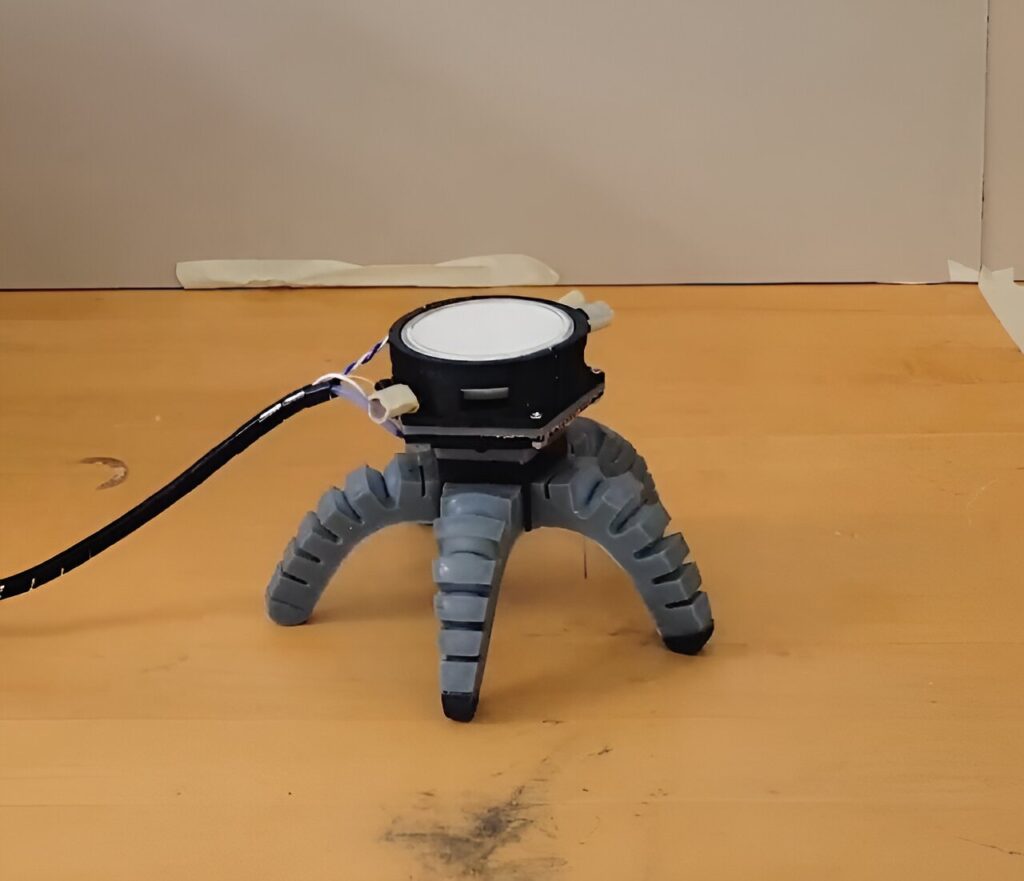Unconventional Robotics: Harnessing the Power of Fungal Mycelia
In an innovative twist on robotic engineering, researchers at Cornell University have developed advanced "biohybrid" robots utilizing fungal mycelia—a surprising material typically found on the forest floor. By tapping into the electrical signals generated by these fungi, the team has created robots that could interact with their environment more effectively than traditional synthetic machines.
The findings appear in a new study titled "Sensorimotor Control of Robots Mediated by Electrophysiological Measurements of Fungal Mycelia," published in Science Robotics. Lead author Anand Mishra, a research associate in the Organic Robotics Lab, emphasizes the groundbreaking nature of this work. "This paper is just the beginning of many projects that will leverage the fungal kingdom for environmental sensing and control in robotics," he explains.
Using light as an input signal for their initial experiments, the researchers envision future applications where robots could analyze chemical signals in environments such as agriculture. The potential benefits include nuanced responses to soil conditions, potentially reducing agriculture’s impact on ecosystems, like limiting harmful algal blooms.
Traditionally, robotics has drawn inspiration from the animal kingdom—mimicking the movement, sensory capabilities, and even thermoregulation found in living creatures. While some creations have explored living biological materials, maintaining these complex systems remains challenging. However, mycelia present unique advantages with their robust growth potential and ability to detect various chemical and biological signals.
Mishra notes the distinction between synthetic and living systems: "Synthetic passive sensors typically serve a singular function. In contrast, living systems respond dynamically to numerous stimuli." This inherent adaptability could make biohybrid robots far more versatile in unpredictable environments.
Integrating mycelia into robotic design necessitates expertise across several disciplines, including mechanical engineering, electronics, mycology, neurobiology, and signal processing. Mishra collaborated with various interdisciplinary experts, including Bruce Johnson, a senior research associate in neurobiology. Johnson guided Mishra in recording the electrical signals passing through the mycelia’s neuronal-like ionic channels. Meanwhile, Kathie Hodge, an associate professor of plant pathology, aided in cultivating uncontaminated mycelia cultures—a critical step given the challenges posed by contamination during electrode insertion.
The innovative system Mishra and his team developed connects an electrical interface to the mycelia, filtering out vibrations and electromagnetic noise while relaying real-time electrophysiological activity. This process translates mycelial signals into digital control signals for the robots’ actuators, allowing for responsive movement.
Two distinct biohybrid robots were created: a soft, spider-like robot and a wheeled version. During experiments, these robots demonstrated their ability to adapt to mycelial signals, responding to natural electrical spikes and changing movement patterns when stimulated by ultraviolet light. In a compelling demonstration, the researchers were able to override the mycelia’s native signals completely.
The implications extend beyond robotics and fungi, as Mishra suggests that understanding these signals may foster a deeper connection between machines and living systems. "By interpreting these signals, we gain insights into underlying stresses in the fungal networks, which can reveal environmental conditions not immediately visible," he states.
The research team also included co-authors Johnson, Hodge, Jaeseok Kim from the University of Florence, Italy, and undergraduate research assistant Hannah Baghdadi.
For further information, refer to the publication:
Anand Kumar Mishra et al., "Sensorimotor control of robots mediated by electrophysiological measurements of fungal mycelia," Science Robotics (2024). DOI: 10.1126/scirobotics.adk8019.
Provided by Cornell University.




